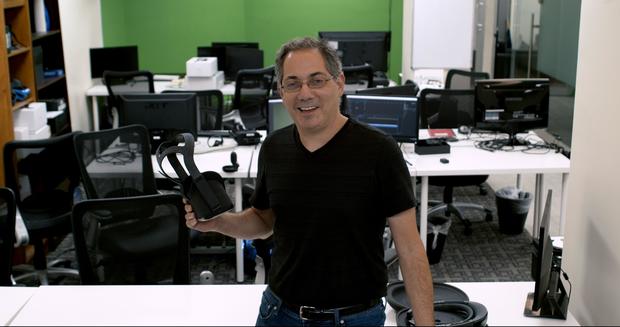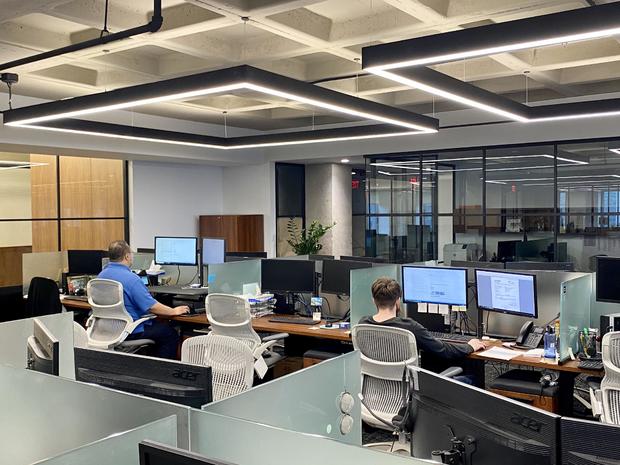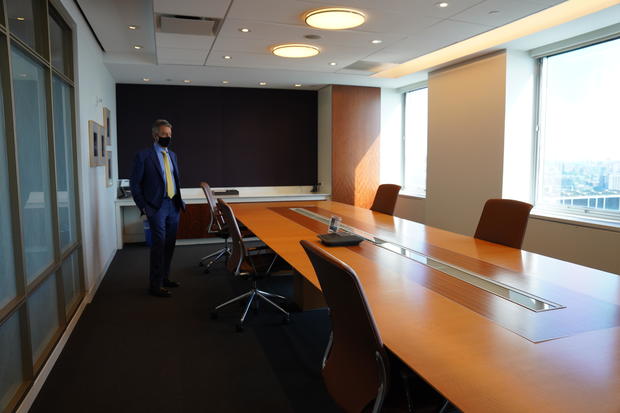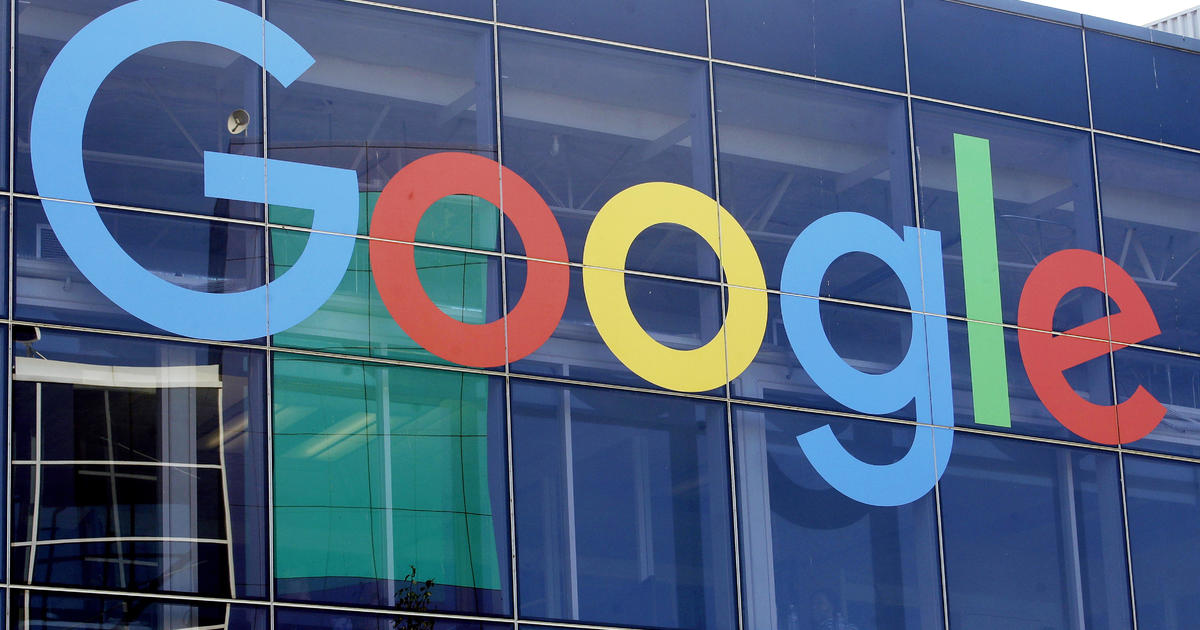Eager for normalcy, some New Yorkers return to the office — but most don't
Epidemiologist Danielle Ompad recently emerged from her makeshift home office to return to work at New York University's School of Global Public Health in Manhattan. "It is only me on this floor right now, and there are probably two to 15 empty cubicles and 10 offices," she told CBS MoneyWatch.
New York City, where nearly 24,000 people have died from COVID-19, remains in a kind of suspended animation more than six months after the disease raced across its five boroughs and crippled America's largest metropolis. Although many health care, grocery store and other essential workers have never stopped reporting in to their respective workplaces, office dwellers have been holed up at home since March and are only slowly filtering back to office buildings that had been shuttered for months.
The occupancy rate of commercial properties in New York City remains only 15%, according to key-card access data from security company Kastle Systems. By comparison, occupancy in Dallas is at about 40%.
"The getting back to the office date has been a moving goalpost a little bit. First it was Memorial Day, then it was Labor Day — now for many it's the beginning of 2021," Kastle CEO Haniel Lynn said. "Based on the conversations I've been having, I am imagining a more phased approach to returning back to work. My conversations with clients have been about investments people want to make to get their businesses ready for when that time comes."
New Yorkers' hesitancy in returning to work in person comes despite the city's progress repelling the coronavirus. Although New York once claimed the highest number of coronavirus cases in the U.S., just over 1% of coronavirus tests were positive as of Tuesday. The city is also gradually returning to life. Retail stores are open. Outdoor dining is in full swing, and indoor dining resumed this week at 25% capacity.
Yet workers who are already back at their desks describe the quiet atmosphere as "eerie."
Like a "ghost town"
Lyron Bentovim, president and CEO of The Glimpse Group, a virtual reality software maker with offices near Manhattan's Bryant Park, said he's usually alone when he works in the company's 5,000-square-foot space. The company has invited employees to return, but isn't requiring them to come in.
Bentovim feels obliged to show up at least once a week "to show presence," he said. "I feel like if I lead by example, others will follow my cue."
"It's like a ghost town," Bentovim said. "Walking around and seeing the empty workstations and all the headsets is very eerie for an office that used to be full of people."
For Bentovim's company, the shift may be permanent. His team has been so effective working remotely that he's considering downsizing, or even closing the office altogether, which costs the company $30,000 a month to rent.
"If I could wave my wand and have the office disappear at this point we could probably do without it," Bentovim said.
The importance of culture
Other managers aren't ready to close the doors, saying that a physical space where employees assemble every day is essential, especially in cementing the kind of professional and personal relationships that make a business hum.
"Working in the office is important in developing a company culture. It's a lot easier to job-hop if you don't have those types of relationships and experiences with your colleagues in your workplace," said Roy Trujillo, chief operating officer of Transperfect, a translation and technology company. "Some companies are contemplating never coming back, but we don't think that fits our model all that well."
Still, Trujillo has a long way to go in luring most of his staff back to Nomad Tower near the Empire State Building. Before the pandemic struck, 600 people reported to the office every day. Now, on any given day, 60 people at most are present in the 140,000-square-foot space.
"So, people have a lot of space to themselves," Trujillo said.
Dave Webley, executive director of Kings County Tennis League, a youth development program, also appreciates the routine of going into a shared office every day, versus working from his Brooklyn apartment. Some members of his six-person management team have been gathering at a WeWork office in Brooklyn Navy Yard for in-person meetings, donning masks and maintaining the proper social distance.
"We are lucky we work in a space with lots of communal areas, and it's empty to be honest," Webley said.
He has a desk in an office with 11 others — none of which are currently occupied. "There's barely anyone in there. You can almost have a whole floor to yourself," he added.
Jonathan Mechanic, chairman of the real estate department at law firm Fried Frank, returned to work in mid-September in a suit, tie and mask. Commuting to work every day marks "a return to normalcy," he said.
"I am dedicated to New York City, and the only way the city will come back to its true self is by people going back to work. That doesn't mean people shouldn't be sensitive and smart about what they do and how they do it, but you never finish what you don't start."








